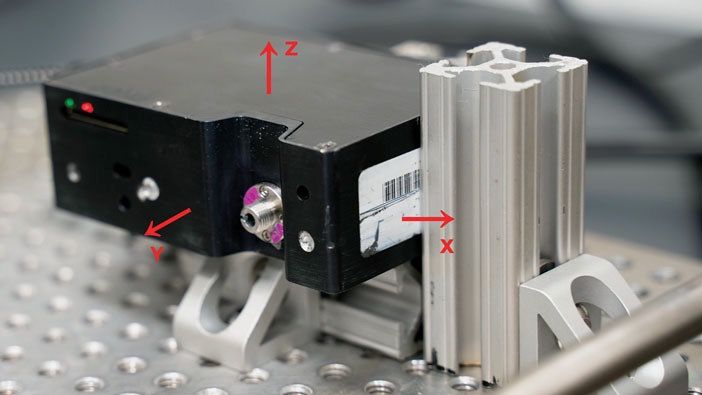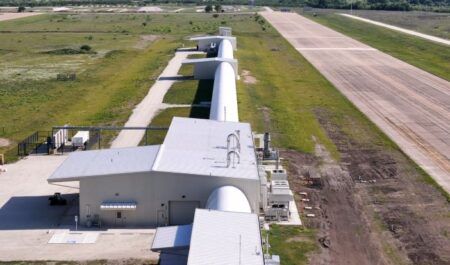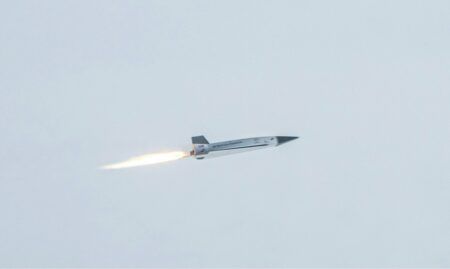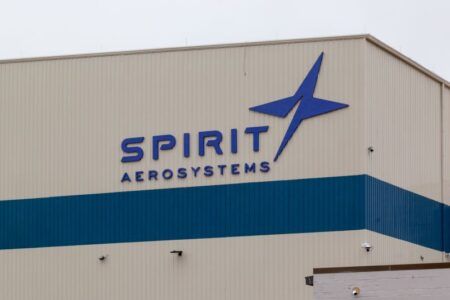A Western Michigan University student t eam is participating in the University Nanosatellite Program, which is sponsored by the US Air Force Research Laboratory; the project is focused on spacecraft propulsion system monitoring and analysis.
CubeSats are very small satellites, built to standard dimensions and fitting in as auxiliary payloads on large satellite launches or resupply missions to the International Space Station.
When conducting research with a CubeSat, using commercially available technology is an effective approach to staying within tight budget constraints. For example, space-qualified spectrometers are extremely expensive, around US$100,000 each. Off-the-shelf spectrometers cost significantly less.
However, budgetary benefits are meaningless without the confidence that off-the-shelf technology can survive a launch. Vibration testing is clearly required to establish mission viability, but it comes with its own risks. If the testing breaks a selected commercial device, there are budget and schedule impacts that a university program can ill afford.
Spectrometer vibration tests were implemented using NASA-STD-7001B, a standard that was designed to verify the survivability of spaceflight payload hardware, as part of Western Michigan University’s (WMU) propulsion system monitoring and analysis project.
The tested spectrometer was an Ocean Optics Flame-S, selected because its wavelength range (300 nm to 1000 nm) captures the peak emission wavelengths from the propulsion system that will be monitored in space during the CubeSat experiment. Students designed and milled aluminum shaker fixtures for the spectrometer, to hold it firmly on the shaker head for random vibration tests along all three axes.
The WMU researchers used Vibration Research’s VibrationVIEW software to input the NASA standard test profile, then a test was run in the z-axis and results collected. After completing
the vibration test, the spectrometer was attached to an apparatus using precise frequency light sources to determine if the spectrometer’s measurements varied from pre-vibration readings. This testing sequence was repeated for the other two axes.
Significantly, the spectrometer survived the vibration testing. Results were formatted on a Power Spectral Density (PSD) graph, and those results closely matched the test profile requirements. Even the variations at the higher frequencies were well within the expected range.
A VibrationVIEW feature called iDOF (Instant Degrees of Freedom) was turned on for these short duration, random vibration tests. In a PSD there are two sources of error, control error and estimation error. The inherent nature of randomness means the estimation error is significant in the early stages of a test, creating an initially jagged, high variance plot that obscures what is really occurring during the test. iDOF is a statistically valid approach that is used to remove the estimation error and quickly creating an accurate PSD, suitable for short duration tests.
The light frequency measurements taken after the vibration tests used three varying gas discharge lamps, Xenon, Mercury, and Neon-Argon. All tests consistently exhibited a positive shift in wavelength for the post-vibration test data, with deviations ranging from 0.1 nm to 1.5 nm. Measurements varying by such small amounts from the pre-vibration testing results are well within a range that can be adjusted for during operation in space.
Having demonstrated that the spectrometer will survive a launch, the next phase in the WMU CubeSat project is to create a ‘flatsat’ operating configuration on a lab bench for comprehensive testing of project components and their interactions. The flatsat components will then be assembled and connected within a 6U CubeSat structure before undergoing another round of vibration tests in a launch payload structure with other CubeSats or mass simulators.
This article was provided by Vibration Research





